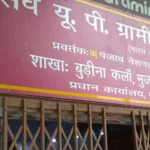[New Delhi]: In a significant push for state-specific development, the Government of India has allocated a total fiscal commitment of ₹3.66 trillion since the launch of the Special Assistance to States for Capital Investment (SASCI) scheme in FY21. This strategic initiative not only showcases the government’s scale of investment but also highlights its targeted approach to reform-linked development across various states.
The allocation of these funds has varied considerably among states, reflecting their individual reform adoption and infrastructural needs. A closer look at the disbursed amounts reveals that Uttar Pradesh has received the lion’s share of ₹57,482.36 crore—over 15% of the total funds—followed by Bihar at ₹34,336.67 crore, Madhya Pradesh at ₹33,169.69 crore, and West Bengal at ₹25,138.56 crore. Notably, states like Rajasthan, Maharashtra, Assam, and Karnataka have also sought significant investments, emphasizing their proactive engagement with SASCI reforms.
Evolution of the SASCI Initiative
Over the past five years, the SASCI scheme has transformed from merely supporting governance reforms to fostering crucial advancements in various sectors, including digital services, urban planning, industrial growth, and rural development. This evolution underscores a dynamic and targeted approach to capital investment across Indian states, aiming to meet the diverse needs of each region.
SASCI provides states with 50-year, interest-free loans specifically to support capital expenditure. The allocations and disbursements have exhibited a consistent upward trajectory, indicating a growing commitment to reform. In FY25, states prioritized industrial growth and land reforms to tap into substantial funding, with all 28 states engaging with the program. From April 1 to August 11, ₹35,399 crore of the ₹1.5 trillion allocated under this scheme was released, showcasing the robust framework established to facilitate state development.
Focus on Rural Land Reforms
During FY25, a total of 22 states undertook reforms focused on building regulations for industrial and commercial projects, alongside vital rural land reforms. Despite this, urban land reforms saw limited attention, indicating a possible area for future improvement and investment. Furthermore, initiatives like vehicle-scrapping programs gained traction, with 19 states integrating central sector schemes onto the SNA SPARSH “just-in-time” cash management platform, aiming at enhanced financial efficiency.
Interestingly, the most recent Union Budget has cut SASCI’s allocation from ₹1.5 trillion in the previous year to ₹1.25 trillion, with about ₹1.49 trillion already disbursed in capital expenditure loans—approximately 58% of which is tied to essential reforms or project-specific conditions. Although the overall budgetary allocations remained stagnant for both FY25 and FY26, this adjustment signals the government’s intent to manage resources judiciously while still promoting growth and reform.
Trends in Governance and Urban Frameworks
In the earlier phases of SASCI, the focus leaned heavily on governance improvements, although uptake was limited in FY22, evident in the mere ₹14,185 crore disbursed. The initial years highlighted significant reforms, such as the One Nation One Ration Card system and urban local body reforms. States that successfully implemented at least three of the four key reforms during FY21 were rewarded with financial incentives.
Today, states collectively account for 20-25% of India’s total infrastructure spending, revealing the critical role of state-level investments in propelling the Indian economy forward. The Centre has consistently increased allocations under this interest-free loan scheme, recognizing its importance as a vital catalyst for infrastructure development and the broader economic landscape.
As we look back on the last five years of the SASCI initiative, the data highlights a clear trajectory of growth and reform that impacts governance and socio-economic wellbeing across the country. With funds flowing into diverse sectors, guided by the principles of reform and investment in infrastructure, the future seems promising for the collaborative growth of India’s states.
For more trusted updates on banking and finance, follow Bankerpedia.
Original source: www.livemint.com










